This article will discuss product backlog templates as tools of organization in the area of project management. Considering the importance of proper organization of tasks when undertaking complex projects, it is important for you as project managers to utilize product backlog templates as tools that should enable you to better organize and manage a list of tasks during the process of product development.
The article will not only introduce you to the main features of the product backlog templates, but it will also provide a rich list of templates that will give you choices when choosing to use this feature.
It is important to first define the term. A product backlog has been defined as “list of product development activities that is used by product teams to plan, prioritize, and manage tasks.” On other words a product backlog template could be understood as the list of all potential features that are to be implemented during the process of project completion.
Why project backlog templates are useful?
Product backlog templates are useful because they allow you as project manager to successfully complete the product development lifecycle. It must be emphasized that as products become more complex, it becomes necessary to use product backlog templates to maintain a list of priorities related to product requirements.
In fact, if you as managers fail to prioritize correctly, that could turn out to be very costly in the end of the product development process.
Product backlog templates serve as a collaboration tool between project stakeholders. Since it is important for you as project manager to successfully cooperate with a diverse group of people, using a product backlog template will allow you to collect valuable feedback from several project stakehoholders such as users, development team or even other particular departments.
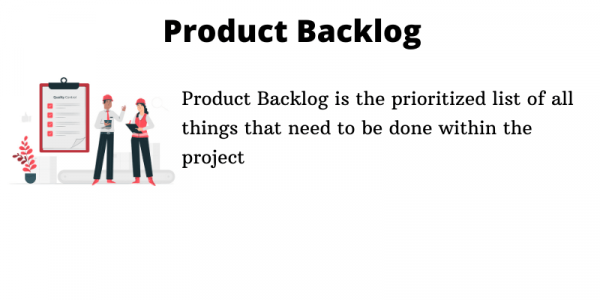
How to create a product backlog?
The product backlog creation process could be broken in the following steps. These steps provide a general illustration of the process, but, of course, you as project manager must keep in mind that product backlog templates are in fact quite diverse and provide you with a great amount of flexibility. Let’s proceed with the product backlog creation steps
Define roadmaps and requirements
First, it is important to start with the roadmaps and requirements. The roadmap will define how the product backlog will take shape. The requirements basically represent the list of backlog items that ought to be accomplished by the development team in order for the product to be completed.
List the tasks to be accomplished
Next, you should list the tasks that you must accomplish in order to complete the first item in the project. You must sort the tasks by their priority levels according to the impact that they have for the customers. It must be emphasized that user stories are also part of the product backlog template. User stories are feature descriptions created based on the perspectives of your user stories. User stories are helpful because they provide an overview of what consumers find helpful regarding the product.
Review
The third step is team review. It is important for your team to review the product backlog. There are two aspects that deserve specific attention: whether prioritization has been done correctly and whether feedback has been taken into consideration.
Sorting process
The last steps deals with the scaling of the product backlog. You must group tasks into near-term and long-term items. During this phase it is important to ensure that product team and design teams are cooperating successfully and whether there are clear development estimates.
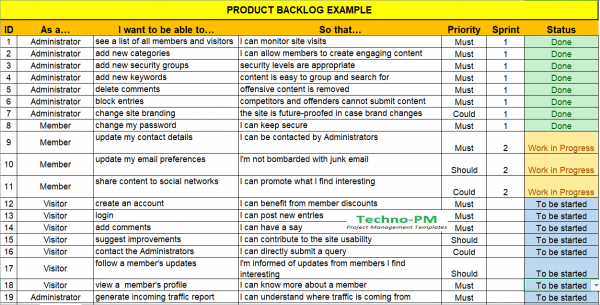
How to use a product backlog template?
You must choose user stories (client requests) from the roadmap and then classify them in terms of priority. Each specific user story is broken into tasks and subtasks and the stage of completion is monitored. The tasks specific to a user story can be color coded for visual clustering. Spreadsheets can also be used for product backlog creation.
List of major product backlog templates
Airtable’s Agile product template
Airtable is a cloud-based relational database that provides the stakeholders the opportunity to view the information in the form of spreadsheet. Various views such as Kanban view, calendar view and even Gantt view can be created in Airtable. It must be also emphasized that Airtable allows you to present the information from your product backlog in customized view for specific stakeholders.
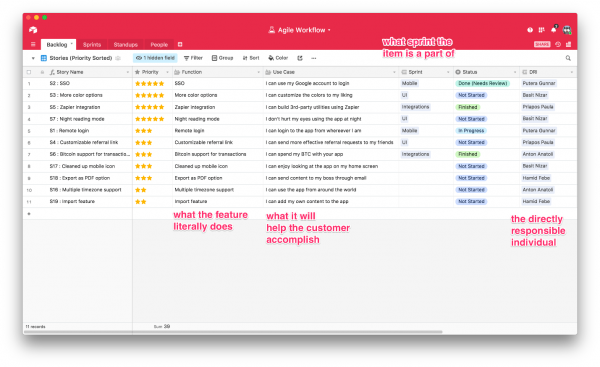
Kanban backlog template
As presented by Kanbanize, the leading Kanban platform, on a Kanban board, the backlog is found on the leftmost part just before the “To Do” column. The idea behind the Kanban Backlog template is not to simply list customer ideas or feedback. Rather, you should attempt to make these ideas as actionable as possible in order for you to be able to successfully organize them.
An important component of the Kanban backlog template is prioritization. In this case, all ideas to be considered must be presented visually in a way that demonstrates different priority levels. Furthermore, it is important for you as project manager to prioritize the ideas based on the level of effort they require and the value they present to consumers.
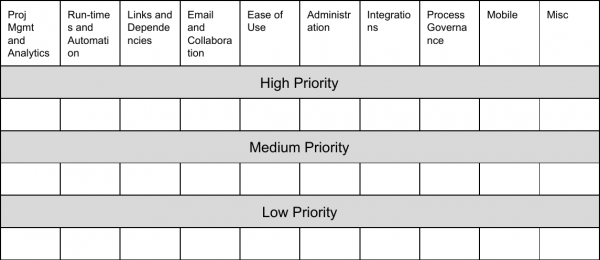
General Scrum backlog template
There are several characteristics that differentiate a Scrum backlog template. An entry in Scrum backlog template must always provide value for the customer. Next, all entries in this template are prioritized and put to a specific order. It must be emphasized that entries have different levels of detail based on the position of the entry within the Scrum Product Backlog.
In a Scrum backlog template you must estimate (give value) to each entry. Being a living document means that you are free to make changes as deemed necessary. Also you must keep in mind that that Scrum backlog is a document that does not have action-items or low-level tasks.
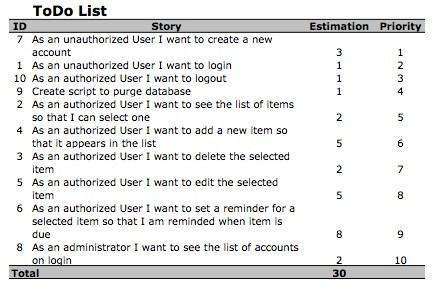
Conceptboard collaborative product backlog template
The collaborative product backlog template is known for presenting a very visual overview of all items to be completed. This helps you to better work with different stakeholders and ensures that your product is developed properly and on time. This product template can be created easily and its efficient approach makes the planning phase much easier for you.
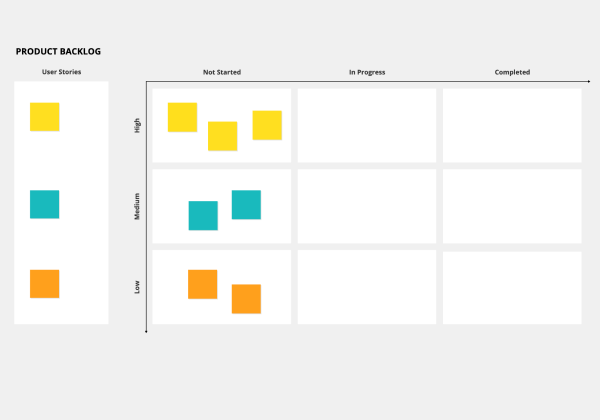
List of product backlog templates according to their use
Team organization product backlog template
This form of backlog template represents a team organization. The template shows the form of the organization and various teams that are working on specific products. In the picture below the teams are labelled by specific letters.
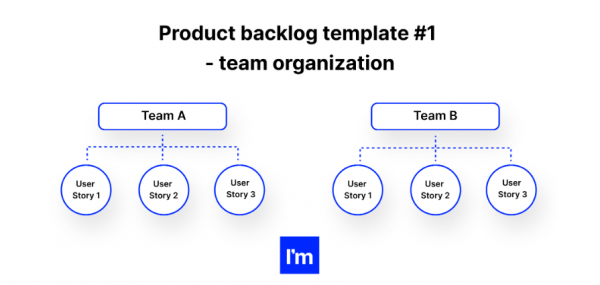
Process product backlog template
The second form to develop a product backlog template is to present the processes and workflows that are needed to filter an idea before its release. In this way you present in the product backlog the main processes necessary for managing the product life cycle. This is helpful for you as project manager as it allows you to optimize it as needed.
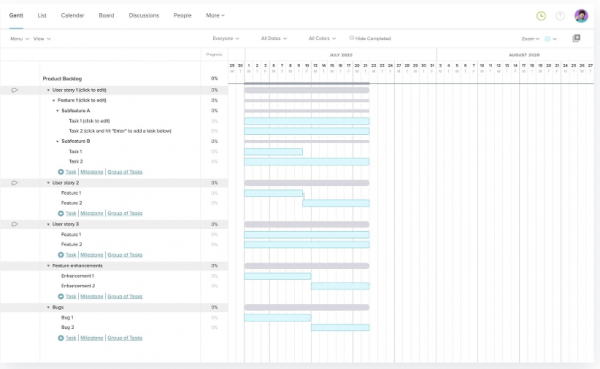
Components product backlog template
This template organizes your backlog around a product and creates a general breakdown structure for product components or deliverables that are yet under development. This template is important if you choose to distribute parts or components of a product rather than the entire product. You must make sure to plan carefully ahead of time before using this template.
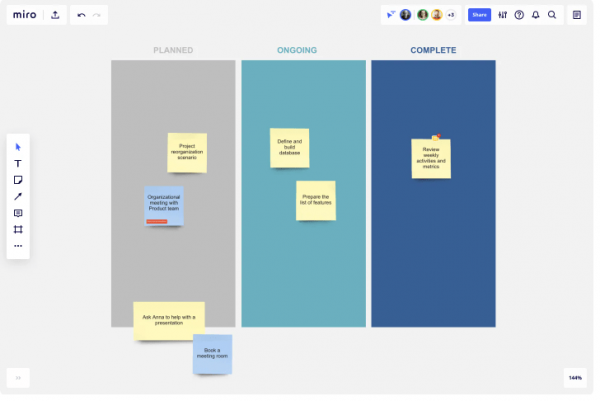
Planning horizon product backlog template
The planning horizon is a five-step concept that is often used in many product development organizations. You must start first with the product vision, proceed with other levels and end with day-to-day commitment. More specifically you must rely in the following steps for developing this template: 1) product vision; 2) product roadmap; 3) release plan; 4) iteration plan and 5) daily commitment. This template is particularly helpful to your project stakeholders.
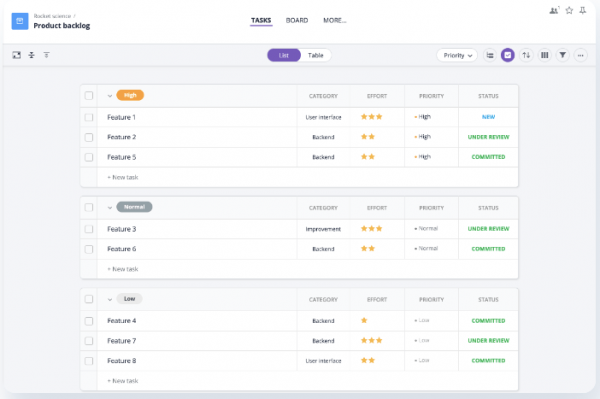
Type of work product backlog template
You must be aware that product development process does not only include product features, but it does also involve bug fixes or process improvements. This product backlog template shifts our focus from the products features to other types of work needed to deliver value to various customers. This structure will enable your teams to better understand their duties.
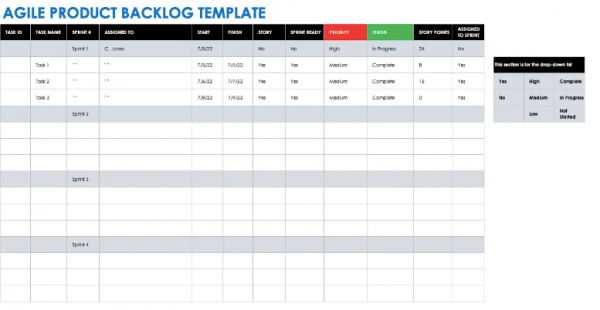
Product backlog templates serve as both effective and efficient tools to run the product development process. The rather diverse body of such templates allows you as project manager to properly allocate your resources to your end goal. Nevertheless, the wide range of choices also means that project managers ought to be prudent in their decision as to which is the right way to proceed with their product development efforts.
